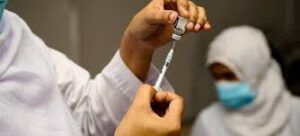Assessment Description
Describe a health promotion model used to initiate behavioral changes. How does this model help in teaching behavioral changes? What are some of the barriers that affect a patient’s ability to learn? How does a patient’s readiness to learn, or readiness to change, affect learning outcomes?
Teaching and Learning Style-Sample Solution
Health promotion is one of the significant priorities of healthcare providers in any healthcare setting. Health education promotes behavioral change and lifestyle modification practices to mitigate risk factors that cause diseases or illnesses. As such, patient education promotes a healthy lifestyle, reduces risk behaviors, and disease prevention measures. The self-efficacy model developed by Albert Bandura focuses on a person’s beliefs in their ability to implement behaviors to elicit desired outcomes. In health care, the model implies that patients can change their behaviors to impact their health positively. The model proposes the patient’s ability to evaluate their behavior and make positive adjustments. In this case, the patients are in charge of decisions on health-impacting behaviors.(Health promotion model Essay-Example)
Self-efficacy is instrumental in allowing people to identify and learn about behavioral change strategies. In this case, behavioral change depends on individuals’ beliefs in their capacity to reinforce positive behaviors directed toward promoting health (Vaughan‐Johnston & Jacobson, 2020). For instance, a patient struggling with smoking but has high self-efficacy is likely to modify their behavior and quit smoking compared to one with low self-efficacy. The model will focus on the healthcare goals the patient wishes to pursue while focusing on behavioral modification strategies.(Health promotion model Essay-Example)
However, there exist barriers that deter patients’ ability to learn. Low literacy levels, lack of motivation, and negative patient-heath care provider relationships limit the patient’s learning ability. The health status of the patients affects their ability to learn. For instance, severely ill patients will not be able to learn. Cultural and language barriers negatively influence patients’ learning capacity (Beigzadeh et al., 2019). Of importance, patients that demonstrate readiness and desire to learn are likely to learn and change their behavior toward health improvement. Thus, the patients will try to understand and implement the education offered. However, patients with a minimal desire to learn will quickly lose interest and portray low tolerance to learning and teaching, thus deterring behavioral modification strategies.(Health promotion model Essay-Example)

References
Beigzadeh, A., Yamani, N., Bahaadinbeigy, K., & Adibi, P. (2019). Challenges and problems of clinical medical education in Iran: A systematic review of the literature. Strides in Development of Medical Education, 16(1).
Vaughan‐Johnston, T. I., & Jacobson, J. A. (2020). Self‐efficacy theory. The Wiley Encyclopedia of Personality and Individual Differences: Models and Theories, 375-379.
